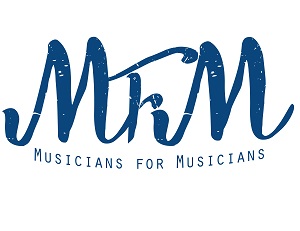Jazz for Peace provides Empowerment Grants, sustainable funding and advocacy for non-profits and all outstanding causes worldwide for over a decade to enable them to be more productive and successful.
Date: September 27, 2016
Venue: WeWork Wall Street (NY)
Review by Dawoud Kringle
The MFM workshop “Make Music Your Business” #6 with jazz musician, activist and founder of the social justice non-profit organization Jazz For Peace (JFP) Rick DellaRatta was another informative episode in the MFM story.
After MFM founder Sohrab Saadat Ladjavardi opened the meeting with a brief description of MFM’s agenda. Sohrab introduced DellaRatta. He’d learned of DellaRatta from an article he’d written in Local 802’s Allegro magazine . The article focused on his adventurous musical trip to Lahore, Pakistan to promote child literacy that was promoted throughout JFP.
DellaRatta began by speaking about the aforementioned trip to Pakistan which was hosted by a Christian charity organization. During his stay he was under constant threat of violence.
In between, Sohrab spoke how open and free the Jazz tradition is, as opposed to the classical music of other societies (Europe, India, Persia, Japan, etc.), and how this element of jazz was well suited to the cross-cultural projects JFP is involved with.
Some years back, DellaRotta recited a poem he’d written at the Savannah Jazz festival. He set the poem to music and ended up bringing this to several places throughout the world. Eventually he established the JFP foundation. As time went on, JFP has received endorsements from the likes of President Barak Obama, and Sen. John McCain.
A video was shown that described the mission of JFP. More information will be found at jazzforpeace.org. This website helps musicians understand the process by which they can apply for grants, and strengthen their own financial position.
After showing the video DellaRatta performed a musical piece: a piano and vocal interpretation of “Cherokee.” His piano playing was marvelous; he navigated the changes with both ease and a poetic grace. His vocals, while not spectacular, were expressive and warm. He’d played this at his event in Lahore. One wonders what impression it made upon those unfamiliar with the intricacies and zeitgeist of Jazz. I asked how the piece was received (considering the vast difference of musical traditions). He said that he is always aware of his audience’s perspective, and led them into the piece with more familiar music (which in this case, was from Christian tradition).
After this, he got down to the three steps of the “Empowerment Tree Grant” process. The first step “CAREFULLY REVIEW THE BENEFITS OF THIS GRANT” is to watch the original video to review the benefits of this grant. There are also links to the grant recipients to give an idea of how this has assisted others. It is important to define goals.
The second step “HELP US PLANT THE ROOTS OF YOUR EMPOWERMENT TREE” is introducing yourself to JFP’s board. This is done through an application process their website walks you through. Part of this involves sharing the application.
Step three “ACHIEVE FUNDING APPROVAL WITH OUR ASSISTANCE” is the process of linking people with like minded objectives in order to produce an event. This later is important in that musicians and supporters must be matched up according to compatibility of vision and objective.
Some time was devoted to explaining the JFP “Empowerment Tree”. This is a model of how the JFP grant process empowers musicians. Each branch is an integral part of the process. For example, Branch 1 defines what supporters will profit from your event, Branch 2 (or, more specifically, the “trunk”) consolidates five local businesses that will sponsor the project, Branch 3 focuses on publicity and awareness, etc. The process is presented in concise detail on their website.
DellaRatta concluded the workshop with a beautiful rendition of Jobim’s “Fotografia.”
JFP is bringing a new and innovative business model that links grants for musicians and music organizations with charities and other forms of public service. It’s a win – win situation for everyone.


